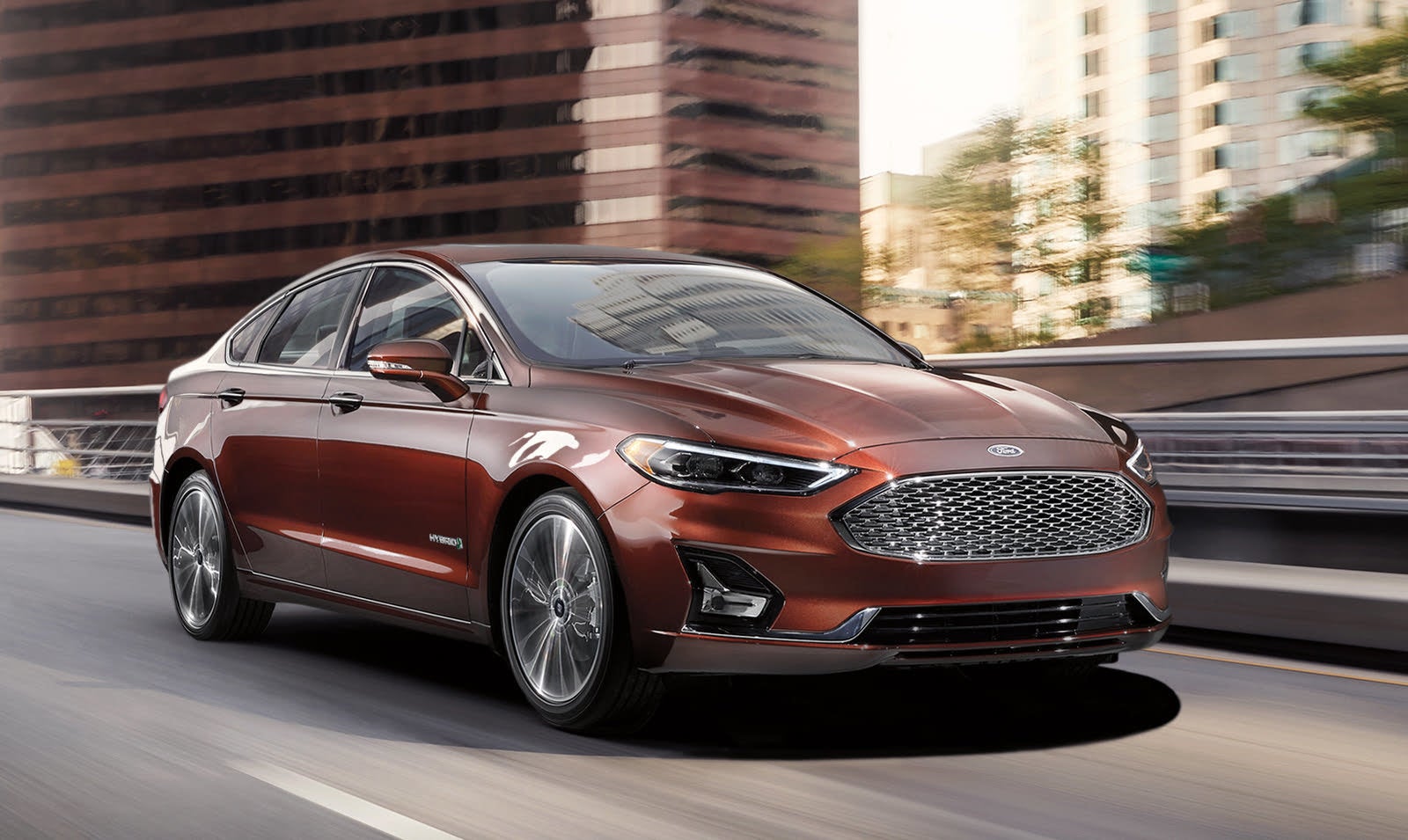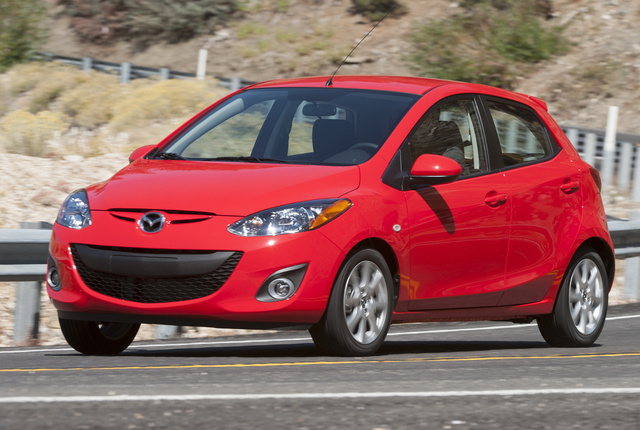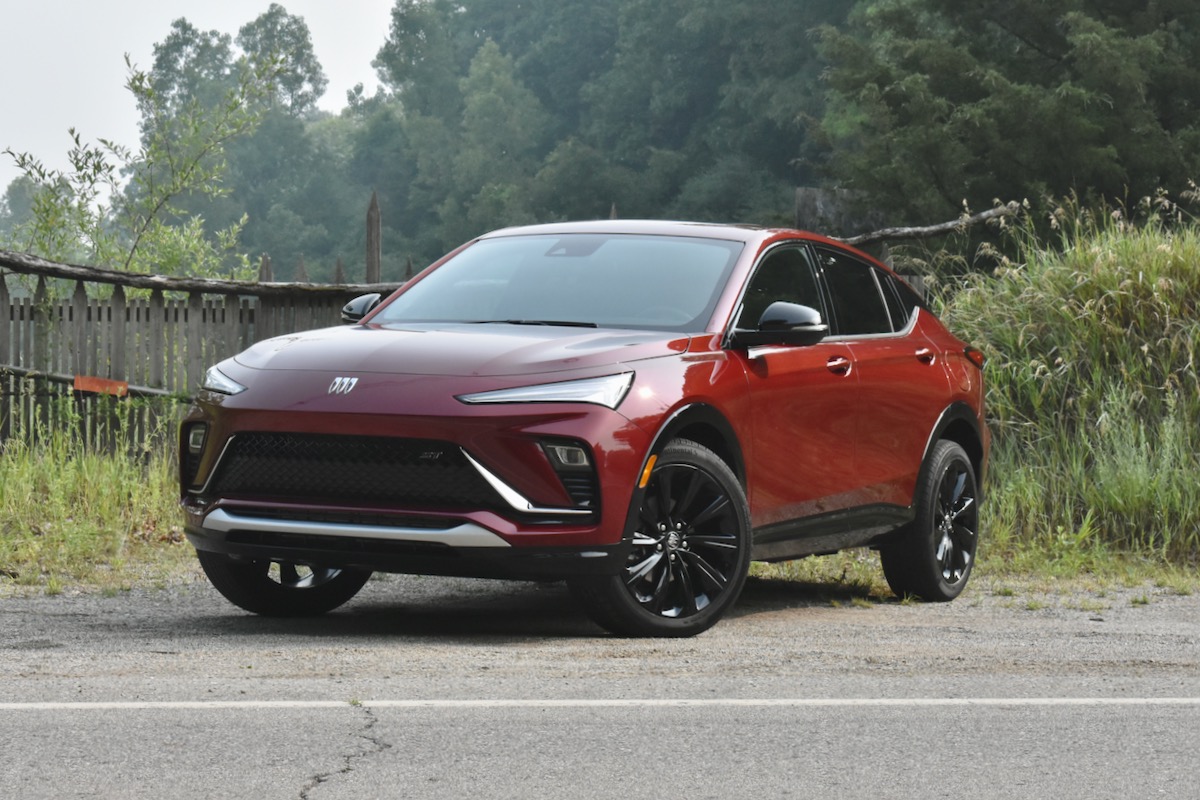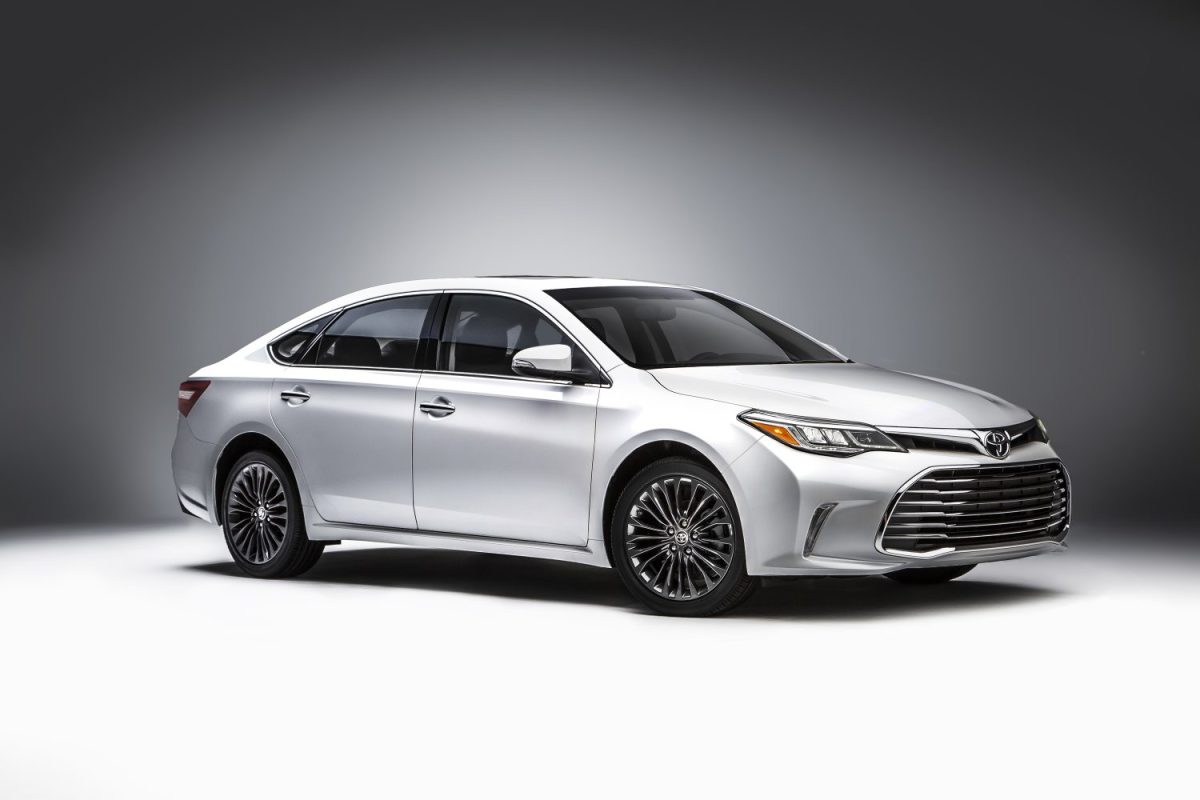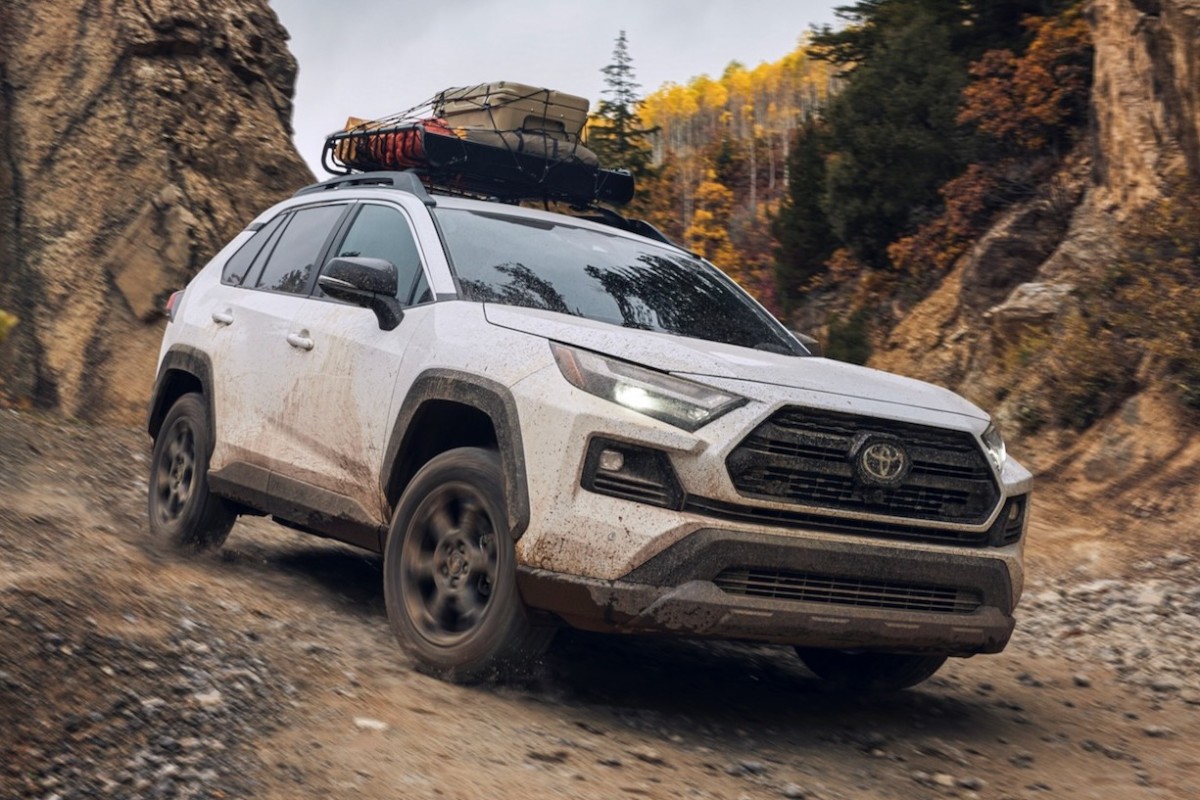Hard to believe, but the percentage of teenagers with driver’s licenses decreased from 65 to 40 percent between 1995 and 2021. Though, that doesn’t mean there aren’t more and more new drivers on America’s road every year—whether folks are obtaining them later in life or emigrating from another country, there is still very much a market for accommodating them.
The number one concern for new drivers is safety, as they’re simply more accident-prone due to a lack of experience. Which is why for this buyers guide, we’ve focused on models that get good marks from the National Highway Traffic Safety Administration (NHTSA) and the Insurance Institute for Highway Safety (IIHS) for crashworthiness but also factored in ease of use and the presence of active-safety systems like automatic emergency braking (AEB) and blind spot monitoring.
But getting such technology often means keeping an eye out on the new car market, which may conflict with new and teen drivers’ second concern: Affordability. This not only applies to the purchase price, but also to maintenance costs, fuel, insurance, parking, registration, and more. Since insurance rates can be high, it’s best to steer clear of sports cars like the Ford Mustangs, Subaru BRZs, or fast BMW coupes. Big pickup trucks, too, as they can be harder to control, have fewer safety features, and cost more to fuel and insure.
To save you some time finding that ideal new-driver's car, we’ve done all of the leg work and compiled some hearty rankings of the 10 best first cars for new drivers that fit the bill well. Since buyers’ needs and wants vary, we’ve included a combination of cars, trucks, SUVs, and crossovers. All new and used options on this list are priced well under $30,000, with pre-owned variants often fetching significantly less than their brand-new counterparts.
The Best First Cars for New Drivers in 2025
- Chevrolet Equinox
- Ford Fusion Hybrid
- Honda Civic
- Mazda Mazda2
- Hyundai Ioniq Hybrid
- Hyundai Venue
- Kia Forte
- Subaru Impreza
- Toyota Corolla
- Toyota Sienna
Chevrolet Equinox
If you're set on buying a new car, the fully redesigned Chevrolet Equinox is a strong choice for new drivers, offering modern styling, updated tech, and solid value. Starting at $29,995, it comes in LT, RS, and ACTIV trims, with AWD available for $2,000 extra. Its 1.5-liter turbocharged engine delivers 175 horsepower and up to 31 mpg highway, paired with a new eight-speed automatic in AWD models for smoother performance.
Inside, the Equinox features an upgraded 11.3-inch touchscreen with standard wireless Apple CarPlay and Android Auto. The RS trim sports a bold black-and-red interior, while the ACTIV trim adds a rugged Maple Sugar and Black theme. Cargo space is competitive, with up to 63.5 cubic feet available.
Safety remains a highlight, with Chevy Safety Assist now including blind-zone monitoring and an improved emergency braking system. Teen Driver Technology lets parents set limits on speed and audio volume. Competing with the Toyota RAV4 and Honda CR-V, the Equinox stands out with its fresh design and well-equipped trims at an accessible price.
Ford Fusion Hybrid
On the used car market, consider the Ford Fusion Hybrid. Ford discontinued production of the Fusion Hybrid sedan following the 2020 model year, and prices for these later Fusions are well under $20,000. There was also a plug-in hybrid, the Fusion Energi, but it costs a little more. The non-hybrid Fusion isn’t a bad vehicle either, though it doesn’t get great gas mileage by comparison. These midsize sedans are out of fashion, which is part of why Ford decided not to continue building them, but the Fusion is an engaging driver with plenty of room, a dash of style, and lots of safety features.
The FWD Fusion Hybrid can be had in a few different trim levels, all featuring a gas/electric powertrain that delivers an EPA-rated 43 mpg in the city and 41 mpg on the highway. Along with that efficiency, buyers get a comfortable midsize sedan with commendable crash-test scores, standard forward automatic emergency brakingh (AEB) and blind-spot monitoring on 2017 and newer models. Lane-departure warnings and other features were also available, including a driver alertness monitor.
While hardly a hot rod, the 195-hp Fusion hybrid offers good performance and a decent reliability record. (In the mid-2000s, they were considered durable enough to find homes with NYC taxicab drivers). There’s also an easy-to-use infotainment system with integrated Apple CarPlay, Android Auto, and Amazon Alexa smartphone apps.
Honda Civic
Ask a crowd of people (maybe even a small crowd) what their first new car was, and there’s a good chance you’ll hear “Honda Civic” mentioned at least a few times. Generations of car buyers have come to recognize the Civic, in all its forms, for its value and dependability. This is still true today, and both the tenth-generation (2016-2021) and current eleventh-generation (2022-present) generations of the Civic make excellent vehicles for new drivers. We even prefer it over its larger Honda Accord cousin, or German competitor the Volkswagen Jetta.
Civics are relatively small cars, but not so small as to make you feel vulnerable, and the 2022 and newer models have back seats comparable to many midsize sedans like the Fusion above. It has small but mighty engines and fun but forgiving handling that communicates the limits of the car to the driver very well. There’s a fast Type R, but that one isn’t really for new drivers. The regular Civics (all FWD) use 2.0-liter or 1.5-liter four-cylinder engines ranging from 158 to 205 hp and either a continuously variable automatic transmission (CVT) or a six-speed manual transmission.
All of these engines return excellent fuel economy, and the Civic’s reputation for reliability is beyond reproach. Best of all though, Honda includes an armada of driver-assist systems, including AEB with pedestrian detection and lane-departure warnings, and even manual models get adaptive cruise control. Even more gear is optional and helps contribute to the Civic’s perennial “Top Safety Pick” ratings from IIHS. All this, and the Civic’s low price, makes it an ideal first ride. Insurance costs aren’t bad, either.
Mazda Mazda2
Mazda no longer sells its funky little five-door Mazda2 subcompact hatchback in the U.S., but thousands of used examples ranging from $4,000 to $12,000 can be found by searching CarGurus’ used vehicle listings. EPA-rated fuel economy is rated at 29 mpg city and 35 mpg highway, making it one of the most thrifty rides on this list, and while 100 hp and 98 lb-ft of torque may not sound like much, it’s enough to jump up to 60 mph in less than nine seconds.
But affordability is just one aspect of this car’s overall appeal. Like other Mazda models, the 2 is regarded as one of the more reliable cars built in the past 15 years, with strong ratings from Consumer Reports and an award for dependability from J.D. Power. On top of that, the 2 has earned good crash-test ratings from the IIHS and the NHTSA. It doesn’t possess any safety tech besides ABS and stability control, but it does sport good overall visibility and strong brakes for its size.
Its a fun and responsive little hatchback that’ll teach any new driver all about car control and communication. In fact, it’s often referred to as a front-wheel drive Miata, so it’d be a great rig for attending an autocross or high-performance driving event (HPDE).
Finally, the Mazda2 possesses great functionality. Inside, there’s realistically room for four passengers (five in a pinch), or the rear seats can be folded to create ample usable cargo space. Like a tiny minivan, that makes the Mazda2 a useful extra vehicle for families with a new driver in the house. It’s also a handy daily driver for urban environments or for students on a budget.
Hyundai Ioniq Hybrid
If the Hyundai Ioniq looks a little like a Toyota Prius, that’s entirely intentional. Hyundai saw the success of Toyota’s hybrid hatchback and decided to build one of its own. Though Toyota has since upped its game, the 2017-2022 Ioniq improved on the basic Prius recipe in a variety of ways, starting with more attractive (and less weird) exterior styling. The hatchback wrapper hid a larger interior with more comfortable front seats and considerably more room in back, as well as more cargo space behind the rear seats.
At the pump, the Ioniq went further than the Prius, returning 55 mpg combined in most trims and as much as 58 mpg in the extra-efficient Blue model, to 52 and 56 mpg combined in the Prius. Like Toyota, Hyundai also offered a Plug-in Hybrid (PHEV) version, and there was also a fully electric Ioniq. Both also make good “first car” choices, but they cost more and aren’t as easy to find. Though Hyundai at first bundled fewer active-safety features than the Prius, from 2020 the Ioniq included standard AEB and lane-departure warnings, with blind-spot monitoring and other systems optional and included on higher trims.
Though the Ioniq didn’t earn as many “Top Safety Pick” ratings from IIHS over its life as the Prius did in similar years, it’s a safe and easy-to-drive vehicle, but both are tepid performers. A redesigned and improved Hyundai Elantra hybrid in 2021 undercut the case for continuing the Ioniq, and the name was repurposed for the automaker’s line of electric vehicles starting in late 2022. Nevertheless, the original Ioniq still makes a good first car.
Hyundai Venue
The Hyundai Venue is the smallest SUV on sale in the U.S. and the smallest vehicle on this list. But to call it an “SUV” stretches credulity. This is really a tall hatchback but with cooler crossover styling in the mold of the company’s midsize Palisade. The Venue is also among the very cheapest crossovers, starting at just over $20,000, which means used models can be had for much less. The automaker hasn’t changed it much since its 2021 debut, so used ones will save you some money.
Regardless of the price or whether you call it an SUV, the Venue comes standard with AEB, pre-collision and lane-departure warning systems, an 8-inch touchscreen infotainment system with Apple CarPlay and Android Auto connectivity, and a 121-hp engine that’s expected to return up to 33 mpg on the highway. That’s what you’ll get with the otherwise basic SE model; if you have an extra $2,000 in your budget, consider moving up to the Venue SEL with its alloy wheels, sunroof, and additional safety features.
While it’s FWD only and not particularly engaging to drive, the Venue is safe, solid, and reliable transportation. The Venue, like all new Hyundais, is also backed by a 10-year/100,000-mile powertrain warranty and comes with free scheduled maintenance for three years or 36,000 miles.
Kia K4
Like the Honda Civic, the Kia K4 is cheap, reliable, roomy, and packed with standard safety features. Introduced as the Forte’s replacement for the 2025 model year, it only comes as a compact four-door sedan, but its back seat and trunk (nearly 15 cubic feet) are huge for a car of this size. Brand new, the 2025 Kia K4 kicks off at about $22,000 and includes automatic emergency braking with pedestrian detection, lane-departure warnings, lane-keeping, and forward collision warnings. Adaptive cruise control and lane centering assist are also standard.
Most new drivers won’t want the 190-hp, 1.6-liter turbocharged GT-Line Turbo, although it’s comparable to the Civic Si. Sadly, it doesn’t come with a manual transmission, though reviewers say the eight-speed auto on this model is quick to shift. The standard K4 use a CVT and 2.0-liter non-turbo four-cylinder making 147 hp. All are FWD. While not exciting, the standard K4 is smooth, quiet, smooth-riding and easy to operate. It also returns up to 30 mpg around town and 40 mpg on the highway. Those are very good figures.
K4s use an 12.3-inch touchscreen with Apple Carplay and Android Auto, and like the vehicle itself, Kia’s system is very simple to learn and operate. Available features include navigation, wireless charging, an upgraded Harman Kardon sound system, and more.
Subaru Impreza
A winner of many “Top Safety Pick” and “Top Safety Pick+” awards from the IIHS, the Subaru Impreza was freshly redesigned for 2024 and earned top marks from the safety rating organization. It’d be a stretch to call this Impreza “all-new,” however, as it’s closely based on the previous-generation 2017-2023 model and retains the engines, standard symmetrical AWD system, and extensive safety systems of that car.
While the 2024 model offered many incremental improvements, cooler styling, and now comes only as a hatchback, the previous generation is just as attractive for new drivers, and it costs less. You can also get that earlier one as a four-door sedan if you like, although the hatch is more useful. Subaru’s AWD system offers good traction in all manner of environments, and Subaru also bundles in its EyeSight safety suite, a comprehensive and standard set of driver-assist features including everything from basics like AEB to adaptive cruise control with lane-centering.
As in previous model years, 2025 Imprezas use 2.0- or 2.5-liter four-cylinder engines making 152 or 182 hp, but the old manual-transmission option is gone, meaning all now use CVTs. Since the old manual models had to forego many of the EyeSight features, that’s not a huge loss, but the Impreza isn’t much fun to drive or particularly fuel-efficient. Historically, Subaru engines also tend to need head gasket repairs later in life, but for models from the last few years, predicted reliability is good.
Toyota Corolla
As generations of young drivers have learned since 1966, it’s hard to go too far wrong with a Toyota Corolla, and there’s a version for just about everyone nowadays. For 2025, Toyota offers everything from the basic LE sedan to the sporty XSE and GR hatchbacks, and even an SUV in the form of the Corolla Cross. There’s an available fuel-sipping hybrid powertrain, too.
With prices starting just a hair over $22,000, the 2025 Corolla isn’t exactly cheap, but it is relatively affordable and, thanks to its strong record of reliability, should provide faithful service for years to come. It’s also been repeatedly named an IIHS “Top Safety Pick,” including in 2023 when the rating organization significantly tightened its standards for that award. The downsides of the Corolla? Except for the wild GR, which isn’t meant for new drivers, it’s not very fun to drive, and the back seat is small even in the SUV version. The Corolla hatchback has the smallest rear seating area in the compact car class.
If a new Corolla doesn’t fit your budget, the used-car market is chock full of low-mileage examples that deliver comparable efficiency and value, albeit without some of the newer model’s upgrades. Many are offered with a Toyota-certified warranty that provides limited roadside assistance and 100,000 miles of powertrain coverage. For first-time drivers looking for a similar margin of safety and reliability in a bigger package, the Toyota Camry beckons.
Toyota Sienna
Very few new adult drivers will choose a minivan as their first vehicle, but for families with teenagers learning to drive, a minivan that can serve the family and be used for a young or new driver is a good option. The current-generation Sienna, new for the 2021 model year and largely unchanged since, isn’t as utilitarian or satisfying to drive as options like the Chrysler Pacifica or Honda Odyssey, but it has a few aces up its sleeve.
Those advantages start with the Sienna’s rock-solid reputation for reliability, which dates back to the original version from the 1990s. Since then, however, the model also acquired a standard hybrid drivetrain and optional AWD. In standard FWD form, the Toyota Sienna gets 36 mpg, and with AWD it falls to only 35, which is better than any other minivan except for the pricier Pacifica plug-in hybrid.
Toyota has also long bundled in lots of safety gear, including automatic emergency braking and adaptive cruise control. Many competitors offer those things now, but they make used Siennas more attractive. As with other minivans, the Sienna has a cavernous interior, though its seats are not as configurable as its rivals. It’s a decent camper, and young drivers relocating for school or possibly a new job might also be well served by its 3,500-pound tow rating. While an unlikely “first car,” the safe, affordable, easy to operate, and reliable Sienna checks all the boxes.


